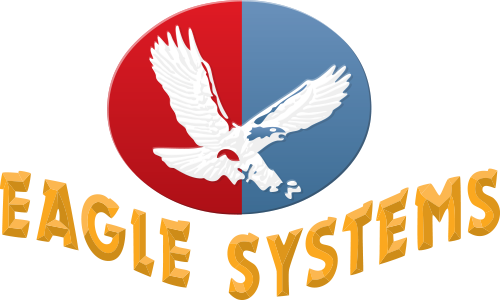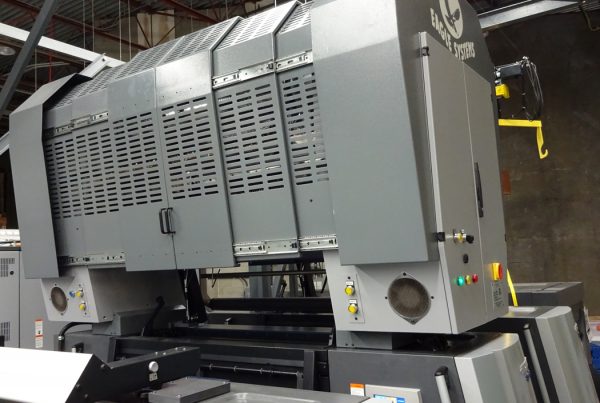Wow, 45 years of working with foil machinery and process!! Time flies when you’re having fun and I still love what I do. Some folks say I haven’t worked a day in my life. To put that into perspective the days of success, which were quite a few in 45 years, were days of satisfaction and like a day off. The days of failure, well they were the workdays. Trust me we all learn by our mistakes, at least we should. If you don’t learn by your failures, then it is called insanity.
To help grow and better our foiling enhancement industry, I share an issue of Back Side Transfer (BST). Might as well make it short and simple and give it an abbreviation, like everything else we do in life today. In the UK, this would be called The British Time Zone, but not here.
We start with a little background. On both Hot Foil (HF) & Cold Foil (CF), there are several layers of coatings. In this article, we are only concerned about one layer, the last one on the live side, and being a heat activated Adhesive Layer (AL) on hot foil, also called a Sizing Layer (SL) in cold foil. This is the layer we are speaking about when we discuss (BST). To make it clearer, we are now speaking of the carrier which is the actual Polyester Film (PET), and the last layer of the live side of the foil. Live side, carrier side, two sides only. The live side, with all the coatings and actual transfer side, is the layer that makes the final bond to the substrate you are foiling on, (HF) or (CF). Without this layer, your bond will not be good and strong. In fact, in (HF) bond will not exist at all, because this is the only bonding layer in the (HF) process. In (CF) you might stand a partial chance because you have a second (AL) coming from the printing process. (BST) is the failure of the bonding between adhesive and the aluminum layer, and ultimately transferring to the carrier side/back side of the (PET). Obviously, the foil is brought to you in a roll form so it is the last layer peeling off and sticking to the back of the (PET). It is wound in a roll against itself.
What happens next is a few things, the quality of foiled product is inferior, and workability has a small window of opportunity. The foil usually will not pass the tape test, and when this happens you might not even know it. But then comes the mechanical issues. The carrier side becomes quite sticky and creates a struggle to actually run the foil. I have thoroughly tested this situation and in doing so, I found frequent blanket wraps, foil breaking, the foil not running smoothly and running quite violent through the machine. Now it is easy to tighten up tension and compensate for the (BST) problem, but this is without doubt, not the answer! The risk in doing this is you will see the flexing of internal rollers in your foil path and risk of damage to the press. We don’t want rollers flying out or into your press. This scenario could never happen on an Eco-Eagle because we have secured our algorithms that makes sure the tension is proper from start to finish on the roll. There is no screen or any method to adjust the tension on an Eagle, and there never has been in 12 years since they have been in the marketplace. The Eco-Eagle has proven for 12 years, adjustments are not needed and should be something an operator should not be able to do. Tension control on an Eagle is fully automatic and the limits are preset by factory certified Eagle technicians.
I share this to the industry because I don’t want other end users, to have non- productive experiences and create a dangerous situation to their printing presses. This article is to help prevent any trouble in my foil industry and make life easier in the (CF) world. I urge owners of foil machines, to make sure limits are programmed on all machines to protect themselves from such catastrophic situations. My concern is an experienced operator thinking the foil is bagging, now must need tension. When I say bagging, the foil seems to get very loose and, like a big plastic bag, starts dancing around in mid-air between the towers. Tightening the tension is not the answer, bring in your foil supplier is the answer, and showing him and getting replacement rolls is the answer.
You might sometimes be running the foiler and the foil itself works perfectly well, then the next roll jumps like crazy. It is not the machine when it comes to Eagle, because tensions and speeds cannot be changed. The Eagle is a very smart machine, but it is not smart of enough to know you changed the roll of foil. No foil manufacturer wants any hassles for you in (CF) operations. There are a few ways of testing problems in the field, one is very simple and comes from the days of (HF). Use a black cloth and hold it against the carrier side for a short period, while the foil is running. Afterward, you will see a buildup of residue on the cloth. This build up is the (AL) that has transferred over.
Another way you can see it is when the machine is running if you have access to look at the foil unwinding from the roll. Does it appear to be pulling straight down in the direction of your first roller or does it appear to be climbing up the roll? If you see climbing, then you know this is a (BST) problem. A while back, I was troubleshooting this problem and found when I increase tension this would go away and enable the foil to run, but then realized how dangerous the tension level was, obviously bringing it back down to normal run levels. I still needed to find what was going on.
When running multiple rolls of foil, 3 out of six ran perfect then the others were bouncing all over the place. I then swapped out rolls and realized something was wrong with the rolls until I had 6 good rolls running. I later put the badly marked rolls back in and I had them all jumping around. This test was done at Packaging Graphics and the Lead Mechanic Mr. Dave Chianesi, told me it’s not the machine, the problem is following the rolls. I struggled to believe him, after many days of testing, he was right, and I can learn from others, every day. As I always say, the foil is not that smart, it doesn’t know what machine it is on. See the video attached to this article and you can easily see what (BST) looks like when running.
I leave you with a little word of advice.
As a captain, motoring and sailing vessels from Maine to Florida all my life, I am considered quite good at navigation and have taken and delivered many courses on the subject. In today’s world we have amazing electronics and still the old compass, GPS and Radar combined are unreal. However, unless you know your equipment and most of all trust your equipment, all these tools are useless. The next time you are near the water and you see the Radar spinning around on the top of someone’s vessel on that clear day you might say to yourself, why does that guy have his radar on, he can see where he is going. I look at that captain building trust in his equipment and knows what he is doing. That’s the boat you want to be on.
In other words, watch the foil run and take a glance every day when things are good. Especially at the point of the foil coming off the unwind. Simply, take a video of the foil, how it comes off the roll as it is running on the day it looks normal, and all is going well. Have a few videos of wide webs, narrow webs. Your machine should run the same every day. You will then know when it is BST (The Foil) and not your machine.
Thank you for your interest and always feel free to call and ask me any questions you might have on BST.
Best regards,
Michael B. King












